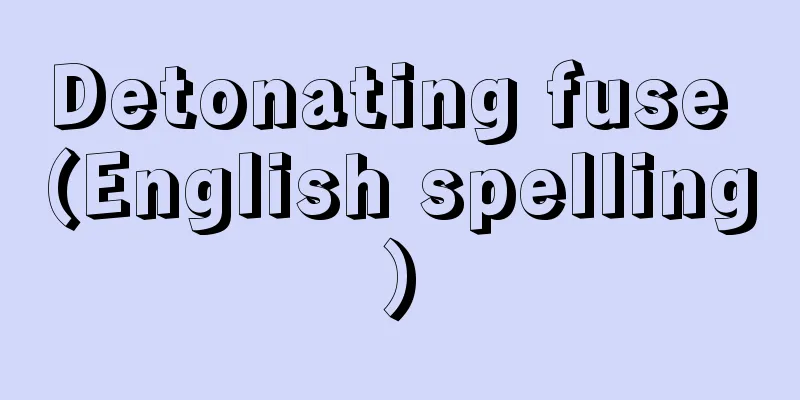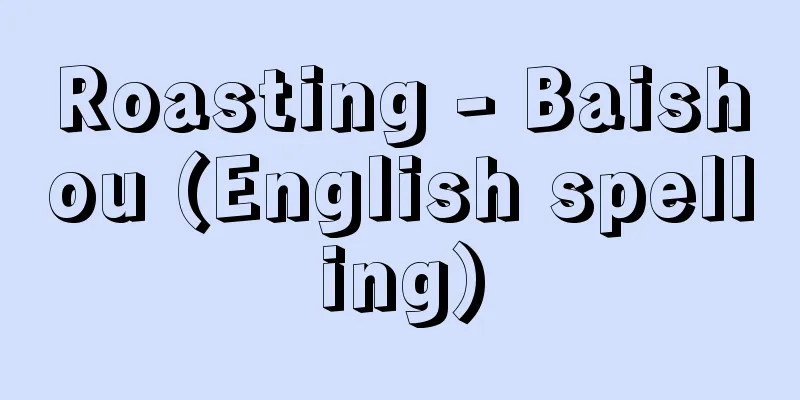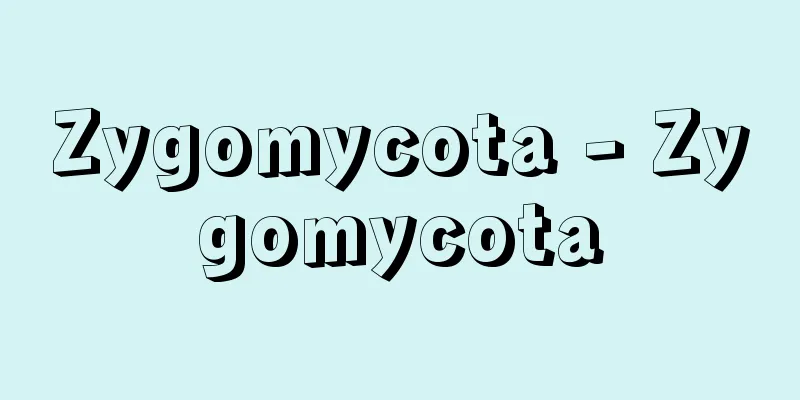Detonating fuse (English spelling)

|
A linear pyrotechnic consisting of a core charge (a substance placed in the center of a fuse or detonation cord that propagates combustion or detonation) and covered with a fiber, plastic, or metal tube. By detonating one end, the detonation can be transmitted to the other end. There are two types of detonation cords in Japan. The first type is made by melting picric acid into a tin tube and stretching it to a standard diameter. In the 1960s, there were no more skilled workers who could stretch it, and it was no longer made. The second type is made by using PETN as a core charge, which is covered with paper tape, hemp thread, cotton thread, etc., and then covered with asphalt or plastic. The outer diameter is 5.5 mm, and the core charge is about 10 grams per meter. There are general-use, deep-sea, and detonation velocity measurement types. The average detonation velocity is specified to be over 5,500 meters per second, but in reality it is in the range of 6,000 to 6,500 meters per second. It is used in places where electric blasting is undesirable due to lightning, stray currents, or other reasons, and for measuring detonation velocities using the Dautriche method (a method that uses a detonating cord and lead plate with a known detonation velocity, named after its French inventor). Since the 1970s, gas conduits that use an explosive mixture instead of a core powder (Hercudette, 1972) and fuses with a high-performance explosive coated on the inside of a plastic pipe (Nonel, 1975) have been developed and started to be used overseas. [Tadao Yoshida and Shingo Date] [Reference] |Source: Shogakukan Encyclopedia Nipponica About Encyclopedia Nipponica Information | Legend |
|
爆薬を心薬(導火線または導爆線の中央に配置され、燃焼または爆轟(ばくごう)を伝播(でんぱ)する物質)とし、これを繊維、プラスチックまたは金属管で被覆した線状の火工品。一端から起爆することによって他端まで爆轟を伝えることができる。日本には2種の導爆線がある。第1種導爆線はピクリン酸をスズ管内に溶填(ようてん)し、これを標準薬径になるまで引き伸ばしたものである。1960年代にはこの引伸しのできる技能者がいなくなり、つくられなくなった。第2種導爆線はペンスリット(PETN)を心薬としてその上に紙テープ、麻糸、綿糸などで被覆し、さらにアスファルトやプラスチックで被覆したものである。外径5.5ミリメートル、心薬量は1メートル当り約10グラムである。一般用、深海用および爆速測定用がある。平均爆速は毎秒5500メートル以上と規定されているが、実際には毎秒6000~6500メートルの範囲内にある。雷や迷走電流その他の理由で電気発破(はっぱ)が好ましくない所での発破や、ドートリッシュ法(爆速のわかった導爆線と鉛板を用いる方法で、フランスの発明者の名で、このようによばれる)による爆速測定などに用いられる。外国では1970年代以降、心薬のかわりに爆発性混合気を使ったガス導管(ハーキュデット。1972)や、プラスチックパイプの内面に高性能爆薬を塗布した導火管(ノネル。1975)などが開発され使われ始めた。 [吉田忠雄・伊達新吾] [参照項目] |出典 小学館 日本大百科全書(ニッポニカ)日本大百科全書(ニッポニカ)について 情報 | 凡例 |
Recommend
Saito Mankichi - Saito Mankichi
Year of death: September 2, 1914 Year of birth: Bu...
Thompson, S.
…His reputation is higher abroad than in Japan fo...
Ichiryusai Teizan
Lecturer. The first (1799-1855) was born Nakamura...
Honen
Year of death: 25th January 1212 (29th February 12...
Salt gland
A secretory gland found in marine birds and reptil...
Fujiwara no Mototoshi
A poet from the late Heian period. There are diff...
Metopidius indicus (English spelling) Metopidiusindicus
...As soon as the chicks hatch from the eggs and ...
Calendula officinalis; pot marigold
An annual plant of the Asteraceae family. Native t...
Coastal Plain
The coastal plain on the east coast of North Ameri...
Weir - Ruins
〘 noun 〙 A place where river water is dammed up wi...
Civics education
Education aimed at nurturing people who conscious...
Gavarni, Paul
Born: January 13, 1804 in Paris Died November 24, ...
sinusoidal cell
The central vein is a small blood vessel that con...
Voguly
...They speak a language (Bogur) belonging to the...
Insulin de - Insulin de
…Because it was clearly a political organization,...









